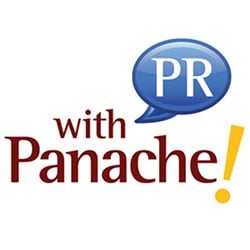Tech & Learning featured District of Columbia Public Schools (DCPS) and Enlarged City School District of Middletown (NY) in their October 2014 issue in an article about successful blended learning efforts. Both districts listed PRP client, myON, in their district's list of preferred blended learning tools! Check out what each district had to say about their blended learning programs below, and be sure to head over to Tech & Learning to read the whole article!
One of this year’s themes for Connected Educators Month is blended learning, and it’s not hard to understand why. With its mix of online and face-to-face (F2F) lessons, blended learning lets teachers use data to differentiate instruction and reach each child with what he or she needs. But don’t let us convince you. See what your colleagues are saying.
Each School Selects the Best Path
District: District of Columbia Public Schools (DCPS)
How it offers blended learning: “DCPS has a lot of different models, but all 86 elementary, middle, and high schools have some level of blended learning going on,” says David Rose, deputy chief, educational technology and library media services. Kramer Middle School uses a rotational model in which students shift between teacher-led instruction and online lessons delivered through laptops. Randle Highlands Elementary also uses a rotational model, but it’s been tweaked to include independent learning stations that use more traditional analog tasks and desktop computers that feature hand-selected educational software. At Hart Middle School, all students use Teach to One: Math.
Grades involved: 40,000 K-12 students
Blended tools: Discovery Techbooks, First in Math, i-Ready, Lexia, myON, Plato Courseware, ST Math, Teach to One: Math
Why blended? “When Chancellor Henderson came on board, she wanted to increase student achievement and reach our academic goals. She knew technology would be a key to help reach our goals,” says Rose. Grants from Google and local businesses helped kick off the blended movement, teach everyone how to look at data to see what’s working, and take small successes to scale. “Blended instruction allows teachers to target instruction in small groups. You go in classes and watch students—one is doing phonemic awareness and another is working on reading comprehension,” says Rose. “If we want students to be college and career ready, our classrooms need to look like those classrooms and colleges. Interactive content is one part.” Adds John Rice, manager of blended learning, “Blended learning lets students be active learners and drive their instruction. Teachers can get students doing what they need and what makes the most sense.”
District: Enlarged City School District of Middletown (NY)
How it offers blended learning: The district uses a rotational model. Students do a mini lesson and break into small-group instruction that includes independent work, digital stations, or a teacher-led session. The district started its blended program in December 2012 after receiving a $20 million dollar Race to the Top grant. They partnered with Education Elements and teachers opted-in to receive training and tools. In August 2013, 33 teachers started blended classrooms. This September, 120 teachers at four elementary schools were on board. Amy Creeden, principal of the district’s Race to the Top grant, believes that the initiative is as successful as it is because of teacher commitment and the support of the technology integration specialists. “The collaborative relationship between the team [members] created a strong teacher feedback loop and ongoing tech support and coaching,” she says.
 |
| Middletown elementary students enjoy group work on their laptops. |
Grades involved: Now available for K-5 grades. The program will be expanding to 6th, 7th, and 8th-grade math and English language arts this school year.
Blended tools: Achieve3000, Dreambox, i-Ready, Lexia, myON
Why blended? At Middletown, where 76% of the students receive free or reduced-priced lunch, students were moving on without reaching proficiency. “We knew we had to provide each student with a personalized learning path. That required teachers to set goals for each student. Digital content helped the teachers to provide prescriptive instruction to support skill gaps,” says Creeden. “Blended [learning] allows a teacher with 25 students at all different reading and math levels to set targeted events and goals for each student.” Students in blended reading classrooms on average exceeded their NWEA growth expectations by 50% (growing 1.5 years in a single year). Students in blended math classrooms on average exceeded the NWEA expected growth by 21% (growing 1.21 years in a single year). Students in blended classrooms outperformed students in non-blended classrooms by 57% in reading and 26% in math.

